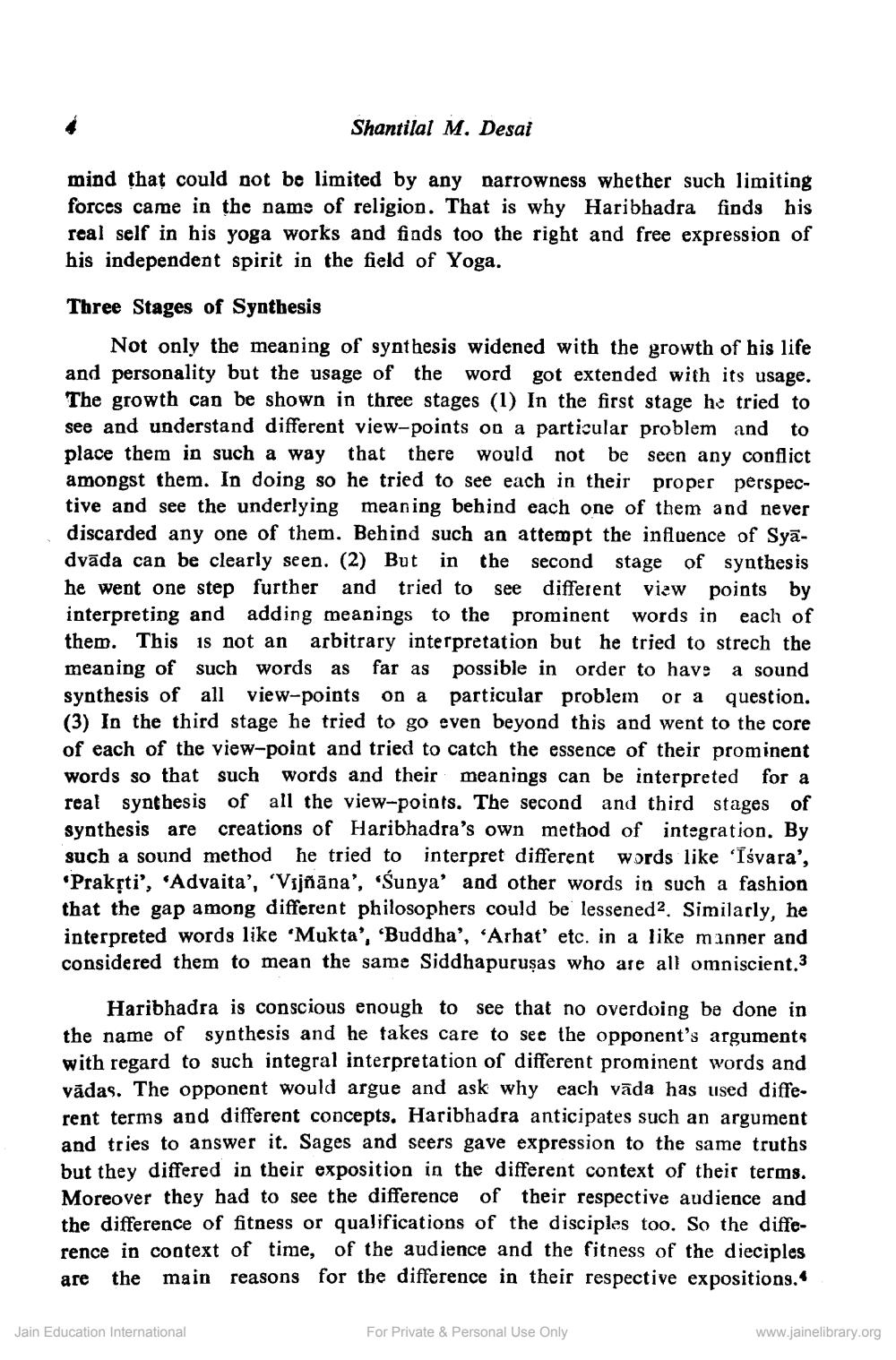Book Title: Sambodhi Author(s): Dalsukh Malvania, H C Bhayani, Nagin J Shah Publisher: L D Indology Ahmedabad View full book textPage 6
________________ Shantilal M. Desai mind that could not be limited by any narrowness whether such limiting rces came in the name of religion. That is why Haribhadra finds his real self in his yoga works and finds too the right and free expression of his independent spirit in the field of Yoga. Three Stages of Synthesis Not only the meaning of synthesis widened with the growth of his life and personality but the usage of the word got extended with its usage. The growth can be shown in three stages (1) In the first stage he tried to see and understand different view-points on a particular problem and to place them in such a way that there would not be seen any conflict amongst them. In doing so he tried to see each in their proper perspective and see the underlying meaning behind each one of them and never discarded any one of them. Behind such an attempt the influence of Syādvāda can be clearly seen. (2) But in the second stage of synthesis he went one step further and tried to see different view points by interpreting and adding meanings to the prominent words in each of them. This is not an arbitrary interpretation but he tried to strech the meaning of such words as far as possible in order to have a sound synthesis of all view-points on a particular problem or a question. (3) In the third stage he tried to go even beyond this and went to the core of each of the view-point and tried to catch the essence of their prominent words so that such words and their meanings can be interpreted for a real synthesis of all the view-points. The second and third stages of synthesis are creations of Haribhadra's own method of integration. By such a sound method he tried to interpret different words like 'Isvara', *Praksti', 'Advaita', Vijñāna', 'Sunya' and other words in such a fashion that the gap among different philosophers could be lessened 2. Similarly, he interpreted words like 'Mukta', 'Buddha', 'Arhat' etc. in a like manner and considered them to mean the same Siddhapuruşas who are all omniscient.3 Haribhadra is conscious enough to see that no overdoing be done in the name of synthesis and he takes care to see the opponent's arguments with regard to such integral interpretation of different prominent words and vādas. The opponent would argue and ask why each vāda has used different terms and different concepts. Haribhadra anticipates such an argument and tries to answer it. Sages and seers gave expression to the same truths but they differed in their exposition in the different context of their terms. Moreover they had to see the difference of their respective audience and the difference of fitness or qualifications of the disciples too. So the difference in context of time, of the audience and the fitness of the dieciples are the main reasons for the difference in their respective expositions. Jain Education International For Private & Personal Use Only www.jainelibrary.orgPage Navigation
1 ... 4 5 6 7 8 9 10 11 12 13 14 15 16 17 18 19 20 21 22 23 24 25 26 27 28 29 30 31 32 33 34 35 36 37 38 39 40 41 42 43 44 45 46 47 48 49 50 51 52 53 54 55 56 57 58 59 60 61 62 ... 304
